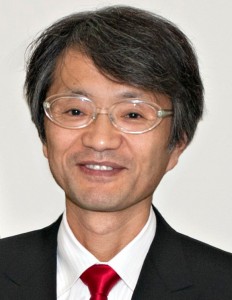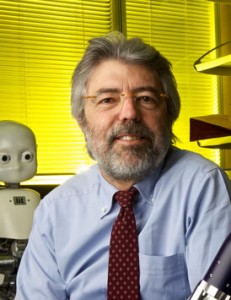Robotics Meets the Humanities
Friday, May 10, 2013, 14:00 – 18:00, Brahms
Abstract
Robots are machines. It follows that the study of robotics is carried out in the natural sciences in disciplines such as engineering, physics, biology, and medicine. On the other hand, human nature is studied in the humanities in disciplines such as philosophy, history, literature, and the visual and performing arts. Although some disciplines such as mathematics transcend both the natural sciences and the humanities, the divide between robotics and the humanities is huge. Or so it seems.
Robotics began as the study of automation and automatic machines. But this is changing. It is now taking on new roles that go well beyond mechanistic automation, impacting directly on people in their everyday lives. Robots perform surgery on people (with a little help from human doctors) and, in the form of adaptive prosthetic devices, robots replace missing limbs in humans. In recent years, research in cognitive robotics seeks not only to replicate human intelligence in robots but also to use these robots as tools to understand cognition in humans. Despite all this, robotics is still perceived to be anchored completely in the natural sciences. This needs to change.
While there is still a long way to go before robots become intelligent in the way humans are, the clear goal is that they will be some day. However, we still have not answered the most frequently asked question in science fiction: to what extent can a robot become like a human? Since science fiction has a habit of becoming science fact, this is a crucial question, among other things, because it gives us the opportunity to fantasize about plausible snapshots of the future and what a world, populated by autonomous artificial systems, may look like. The influence of the humanities on the study of robotics is rapidly growing, for the simple reason that robotics is becoming a part of humanity: assisting, interacting,, and enabling people in an increasing number of ways. The humanities are the domain of human nature and the natural sciences are the domain of robotics but the two are not separate. If it is to be effective, robotics must take into account our understanding of humanity.
This forum invites distinguished speakers from the humanities to begin a dialogue with the robotics community. The aim is to understand how we can bridge the unnecessary divide between the two communities and to foresee the many beneficial implications if, and when, we succeed in doing so.
Yoshihiko Nakamura
Department of Mechano-Informatics, The University of Tokyo
Giulio Sandini
Robotics, Brain and Cognitive Sciences Dept., Istituto Italiano di Tecnologia
Program
Time | Talk |
|---|---|
| 14:00 – 14:30 | Welcome and Introduction Yoshihiko Nakamura, The University of Tokyo Giulio Sandini, Istituto Italiano di Tecnologia |
| 14:30 – 16:00 | The “uncanny valley” goes on and on Willard McCarty, King's College London, University of Western Sydney The notion of uncanny in Ancient Greece Yasunori Kasai , University of Tokyo Cinema Robot Interaction or “I’m not bad, they just draw me that way!” Giacomo Cimini, Wonder Room Productions |
| 16:00 – 16:30 | Coffee Break |
| 16:30 – 17:00 | SISTEMATURGY Marcel·lí Antúnez Roca, www.marceliantunez.com |
| 17:00 – 18:00 | Round table Being human in the robot age Carme Torras, Spanish Scientific Research Council Futurium – Digital Agenda for Europe Olivier Da Costa, European Commission |
| 18:00 | End |
Willard McCarty
King’s College London, University of Western Sydney
The “uncanny valley” goes on and on
Abstract
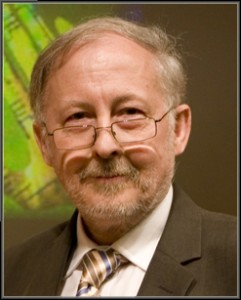 From the beginning the humanities have been defined by what they are not: first not theology, then not science. With the rise of biology in the second half of the 20th Century and the development of computing, the latter distinction has grown ever sharper. It would seem that the increasing sophistication and power of technoscience is encroaching on the human as we have conceived it, saying in ever greater detail what does not concern the humanities, and so raising the question yet again of what does.
From the beginning the humanities have been defined by what they are not: first not theology, then not science. With the rise of biology in the second half of the 20th Century and the development of computing, the latter distinction has grown ever sharper. It would seem that the increasing sophistication and power of technoscience is encroaching on the human as we have conceived it, saying in ever greater detail what does not concern the humanities, and so raising the question yet again of what does.
Robotics may have a long way to go, but its challenge to the human is already with us, e.g. via the Swedish television series Äkta Människor (Real Humans, 2012) or the episode “Be Right Back” in the British series Black Mirror (2.1, 2013). In this talk I will argue that the metaphor of a “steep-walled valley” is twice wrong, however. It measures the technological challenges, but equally formidable ones face our understanding of the human. It might seem that there are two steep approaches to a common summit. But this is to assume a single conquest, which even if never quite achieved, like an Everest never conquered, remains on an unchanging horizon. Or, to use a different metaphor, it assumes a single change in our understanding of the human, e.g. to a “posthuman” condition. The history of human self-definition suggests quite otherwise: that the apparent narrowing of scope for the humanities, with their consequent anxieties, and the convergence of anthro-robotics on the human constitute a phase in a much greater process to which both need to look: Giorgio Agamben’s “anthropological machine”. Not two valleys, then, but a common struggle on which the separate futures of both the humanities and robotics depend. The uncanniness of Masahiro Mori’s “uncanny valley” is the point.Biography
Biography
Willard McCarty is Professor of Humanities Computing and Director of the Doctoral Programme in the Department of Digital Humanities at King’s College London, Professor in the Digital Humanities Research Group, University of Western Sydney and Fellow of the Royal Anthropological Institute (London). He is Editor of the journal, Interdisciplinary Science Reviews (2008-) and founding Editor of the online seminar Humanist (1987-). He is recipient of the Canadian Award for Outstanding Achievement, Computing in the Arts and Humanities (2005), the Richard W. Lyman Award, National Humanities Center (2006) and the Roberto Busa Award (2013), Alliance of Digital Humanities Organizations. He is currently at work on Machines of Demanding Grace, a book concerned with the interrelation of the humanities and computing. He lectures occasionally in Europe, North America and Australia. See www.mccarty.org.uk.
Yasunori Kasai
University of Tokyo
The notion of uncanny in Ancient Greece
Abstract
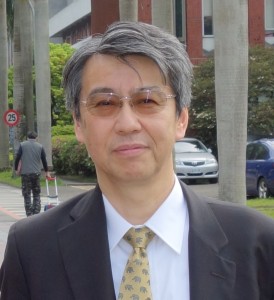 The idea of the ‘uncanny valley’ can be traced back to the notion of ‘das Unheimliche’ (uncanny) put forward by S. Freud. He argues that the counter-concept of ‘das Unheimliche’, namely, ‘das Heimliche’ means both ‘vertraut’ (familiar, intimate) or ‘behaglich’(comfortable) and ‘versteckt’ (hidden, concealed) or ‘verborgen’ (secluded, hidden), and that the notion of ‘das Unheimliche’ is the counter concept only of the former (‘vertraut’ or ‘behaglich’), not that of the latter. Therefore the ‘das Heimliche’ in the latter meanings can become ‘das Unheimliche’ when it is disclosed or open to public.
The idea of the ‘uncanny valley’ can be traced back to the notion of ‘das Unheimliche’ (uncanny) put forward by S. Freud. He argues that the counter-concept of ‘das Unheimliche’, namely, ‘das Heimliche’ means both ‘vertraut’ (familiar, intimate) or ‘behaglich’(comfortable) and ‘versteckt’ (hidden, concealed) or ‘verborgen’ (secluded, hidden), and that the notion of ‘das Unheimliche’ is the counter concept only of the former (‘vertraut’ or ‘behaglich’), not that of the latter. Therefore the ‘das Heimliche’ in the latter meanings can become ‘das Unheimliche’ when it is disclosed or open to public.
Freud also lists the Indo-European equivalent terms to the notion of ‘das Unheimliche’ which include the Greek term, ‘xenos’. In this paper I shall start my analysis with the notion of ‘xenos’ in Homer. I shall demonstrate that the xenos has two contrasting meanings and explore its backgrounds in the Homeric poems and later developments in Greek literature.
Next, I shall talk on the metamorphoses in Greek myths where the deities both disclose and disguise their identities to the humans. But, the deities never show their ‘true’ appearances to the humans. Also, the humans and the deities sometimes compete with each other. Both in the ‘xenos’ relationship and the metamorphoses it is the ‘closeness’ between the deities and the humans that strikes us.
Lastly, I should like to touch on the topic of the mask in the Greek drama. Why does the Greek drama, both Tragedy and Comedy, use the mask (as the Noh drama does)? It is hoped that my paper will contribute to the understanding of the theory of the uncanny valley in wider aspects than before.
Biography
Dr. Yasunori Kasai is Professor of Department of Classics, Faculty of Letters, University of Tokyo. He received LL.B. from the University of Tokyo and Ph.D. from University of Bristol. After working as Research Assistant in Roman Law, University of Tokyo in 1978-1982, he became Lecturer, Associate Professor, and Professor of Legal History and Rhetoric, Niigata University in 1986-2006. Dr. Kasai was Professor of Legal History and Rhetoric at Otsuma Women’s University, Tokyo in 2006-2011. Since 2011, he has been at the current position. Dr. Yasunori Kasai spent some time as Visiting Scholar at Christ Church Oxford, Balliol College Oxford, and Brown University, RI, USA.
Giacomo Cimini
Wonder Room Productions
Cinema Robot Interaction or “I’m not bad, they just draw me that way!”
Abstract
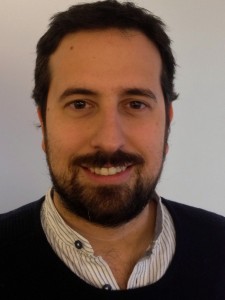 From the early days of cinema, robots have always fascinated filmmakers for their capacity of being pure tools of a narrative: evil primal forces (antagonist) or creative bringer of love and compassion (helper). They have frequently been used as tools in the hands of mad scientists but more frequently they simply embodied the relationship between the audiences and the technology during a specific timeframe: from the magical technological creation of the robot/Maria (Metropolis), through the destructive force of the cold war (The Day the earth stood Still) to the friendly Apple-like mass produced Robot (Wall-e). Their violent responses have been frequently an understandable reaction to a threat to their own survival (2001 A Space Odyssey, Terminator, Blade Runner) as they are cinematically in fact our metallic distorted mirror, children of the chip and possible next state of our evolution. So similar to their human creators (Pares cum paribus facillime congregantur) they are more and more susceptible of the most basic human emotions: love and hate.
From the early days of cinema, robots have always fascinated filmmakers for their capacity of being pure tools of a narrative: evil primal forces (antagonist) or creative bringer of love and compassion (helper). They have frequently been used as tools in the hands of mad scientists but more frequently they simply embodied the relationship between the audiences and the technology during a specific timeframe: from the magical technological creation of the robot/Maria (Metropolis), through the destructive force of the cold war (The Day the earth stood Still) to the friendly Apple-like mass produced Robot (Wall-e). Their violent responses have been frequently an understandable reaction to a threat to their own survival (2001 A Space Odyssey, Terminator, Blade Runner) as they are cinematically in fact our metallic distorted mirror, children of the chip and possible next state of our evolution. So similar to their human creators (Pares cum paribus facillime congregantur) they are more and more susceptible of the most basic human emotions: love and hate.
Biography
Giacomo is a London-based Italian filmmaker, represented by Anthony Mestriner at leading talent agency Casarotto Ramsay. Following his Laurea in Communications from Rome’s La Sapienza University and a filmmaking course at the New York Film Academy, Giacomo earned an MA with distinction in Filmmaking from the London Film School. His graduate sci-fi short film, La Citta’ nel Cielo (City in the Sky), premiered at the 66th Venice Film Festival and achieved online distribution on major platforms. Previous credits include a low budget horror feature and the 8-part TV series Delitti for Fox International’s Fox Crime channel on Sky Italy. In 2010 Giacomo was selected for the Berlinale Talent Campus and awarded funding for the Trailermade competition to direct a promotional trailer for his submarine monster thriller, Bleak Sea. The project was subsequently picked up for development by Working Title Films. Giacomo also works as a lecturer at the Met Film School where he teaches Short Film Production. His latest project is the film adaptation of The Nostalgist (www.thenostalgistfilm.com) a sci fi story by Daniel H. Wilson (robopocalypse, Amped). He is also developing a slate of film projects with his production company Wonder Room Productions (www.wonderroomproductions.com).
Marcel·lí Antúnez Roca
www.marceliantunez.com
li@marceliantunez.com
https://vimeo.com/user3057767
https://www.youtube.com/ferasatana http://www.facebook.com/marcelli.antunezroca
SISTEMATURGY
Abstract
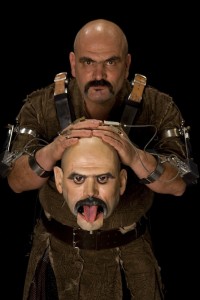 Marcel.li Antúnez Roca explains his own career from La Fura dels Baus until his last mechatronic performance Pseudo (2012). He makes emphasis in his methodology Sistematurgy, interactive narration controlled by computers, using several video demos. Sistematurgy mix together different medias in order to tell a story. To do that Marcel•lí and his equip has specific programs and several devices like guncam (shot images in real time), dreskeleton (body interface), mental lantern ( head projector), head ventricol (robotic dummy), among others. During the lecture Marcel•lí uses some of this devices like his dreskeleton and show several examples of his interactivity.
Marcel.li Antúnez Roca explains his own career from La Fura dels Baus until his last mechatronic performance Pseudo (2012). He makes emphasis in his methodology Sistematurgy, interactive narration controlled by computers, using several video demos. Sistematurgy mix together different medias in order to tell a story. To do that Marcel•lí and his equip has specific programs and several devices like guncam (shot images in real time), dreskeleton (body interface), mental lantern ( head projector), head ventricol (robotic dummy), among others. During the lecture Marcel•lí uses some of this devices like his dreskeleton and show several examples of his interactivity.
Biography
Marcel.lí Antúnez Roca (Moià, 1959) is well-known in the international art scene for his mechanotronic performances and robotic installations. In the nineties his avant-garde mechatronic performances combined such elements as Bodybots (body-controlled robots), Sistematugy (interactive narration controlled by computers) and dreskeleton (the exoskeleton body interface).
The themes explored in his work include: the use of biological materials in robotics, as in ‘JoAn l’home de carn’ (1992); telematic control on the part of a spectator of an alien body in the performance EPIZOO (1994); the expansion of body movements with dreskeletons as in the performances: AFASIA (1998), POL (2002), PSEUDO (2012), among others; involuntary choreography with the bodybot REQUIEM (1999); and microbiological transformations in the installations RINODIGESTIO (1987) AGAR (1999) or the spatial and utopian artwork TRANSPERMIA (2004).
In the early nineties his performance EPIZOO caused a commotion in the international art scene. For the first time a performer’s body movements could be controlled by the audience. By operating a videogame, a spectator interacts with the bodybot worn by Antúnez. Since the eighties a constant preoccupation for the human condition has been evident in Antúnez Roca’s work, focussing on how the desires and emotions of human beings are expressed and what motivates them. This investigation started with the tribal performances of the group La Fura dels Baus, of which he was a founding member, artistic coordinator, musician and performer from 1979 to 1989, and it has continued throughout his solo career.
This concern has gradually led to complex works that often become unclassifiable hybrids. The incorporation and transgression of scientific and technological elements, which he has been using since the early nineties, in addition to the technical means for interpreting them consisting of unique and specific devices, have produced a new cosmogony that is warm, raw and ironic. It deals with traditional themes such as affection, identity, scatology and death. These elements acquire an ironic and human dimension in his works provoking a spontaneous reaction in the audience.
In the recent years, Marcel•lí has been working on the MEMBRANA project. Membrana has been an ongoing creative process that has given rise to three independent projects: a conference/performance, a mechatronic performance and an installation. These projects are the Protomembrana (2006), the Hipermembrana (2007) and the Metamembrana installation (2009). Marcel•lí is currently working on the ARSENALE DELLE APPARIZIONI project, who includes his last mechatronic performance PSEUDO (2012).
Antúnez Roca has presented his work in numerous international venues including La Fundación Telefónica in Madrid, La Villette in Paris, the P.A.C. in Milan, I.C.A. in London, FILE in Sao Paulo, in the SOU Kapelica Ljubljana, the Barcelona MACBA, the DOM Cultural Center of Moscow, the ZDB Gallery in Lisbon, LABoral in Gijón, ZKM in Karlsruhe , Bienal de Arte Contemporaneo de Sevilla, the DAF inTokio, among others.
Antúnez has received the following awards and distinctions: First Prize at the Festival Étrange, Paris 1994; Best New Media Noveaux Cinéma Noveaux Médias Montreal 1999; Max New Theatre award, Spain 2001; FAD Award Barcelona 2001, Honorary Mention at Prix Ars Electronica 2003 and Premi Ciutat Barcelona Multimedia 2004.
Carme Torras
Spanish Scientific Research Council
Being human in the robot age
Abstract
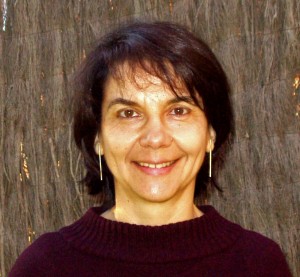 How will our increasing interaction with robots affect individual identity, society and the future of humankind? Can this evolution be predicted? Can it somehow be guided? Roboticists have turned to the humanities in search for answers. Philosophy, psychology and law are shedding principled light on these issues, while arts and science-fiction freely speculate about the role the human being and the machine may play in this “pas a deux” in which we are irremissibly engaged. We expect the round table to favor a stimulating interchange of views between representatives of these communities.
How will our increasing interaction with robots affect individual identity, society and the future of humankind? Can this evolution be predicted? Can it somehow be guided? Roboticists have turned to the humanities in search for answers. Philosophy, psychology and law are shedding principled light on these issues, while arts and science-fiction freely speculate about the role the human being and the machine may play in this “pas a deux” in which we are irremissibly engaged. We expect the round table to favor a stimulating interchange of views between representatives of these communities.
Biography
Carme Torras (www.iri.upc.edu/people/torras) is Research Professor at the Spanish Scientific Research Council (CSIC). Her research interests range from robot kinematics, computer vision and neurocomputing, to geometric reasoning and manipulation planning. Prof. Torras has led several EU projects in the frontier between AI and Robotics, and she is currently Editor of the IEEE Transactions on Robotics. On the literary arena, her novel “La mutació sentimental” (Pagès Editors, 2008) won the two most prestigious Catalan Science-Fiction awards, and it has been recently translated into Spanish (Editorial Milenio, 2012).
Olivier Da Costa
European Commission
Futurium – Digital Agenda for Europe
Abstract
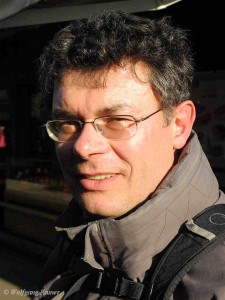 The Futurium platform will be presented. It aims at collecting the visions of the long-term future and the policy ideas of the European citizens and combines the informal character of social networks with the methodological approach of foresight tools. The overall goal is to reverse the engagement path adopted in normal Commission practices: from top-down, expert-cantered consultations to grass roots stakeholder engagement. This Science Forum is organised in collaboration with Futurium.
The Futurium platform will be presented. It aims at collecting the visions of the long-term future and the policy ideas of the European citizens and combines the informal character of social networks with the methodological approach of foresight tools. The overall goal is to reverse the engagement path adopted in normal Commission practices: from top-down, expert-cantered consultations to grass roots stakeholder engagement. This Science Forum is organised in collaboration with Futurium.
Biography
Olivier Da Costa is since 2008 a Project Officer in the Robotics unit of European Commission’s DG CONNECT. Before DG CONNECT he held various positions in foresight, futures studies, strategic consulting, innovation and information systems as well as in scientific research. Beside Luxembourg he worked in Spain, France, Japan, Britain and Germany. He holds a PhD in Physics and graduated from Ecole Polytechnique in Paris.




















